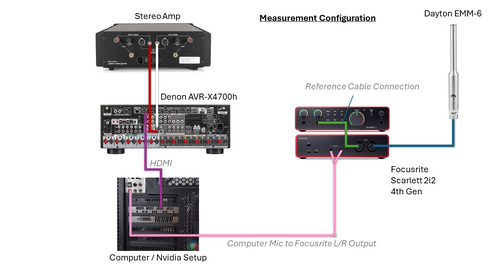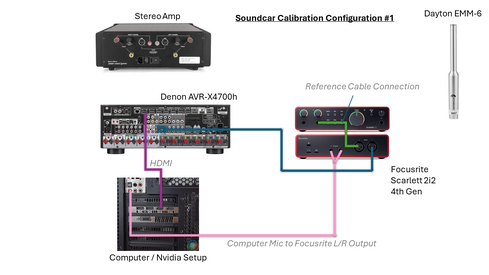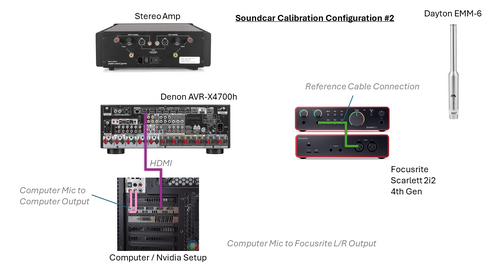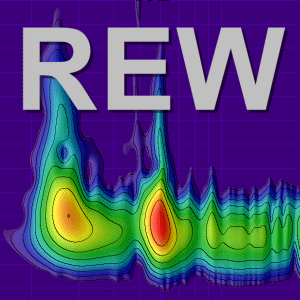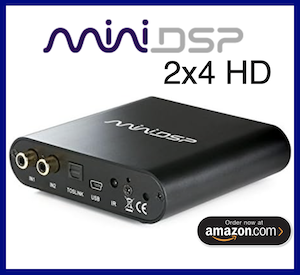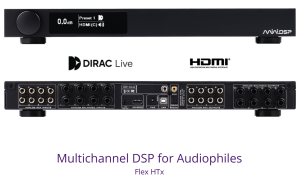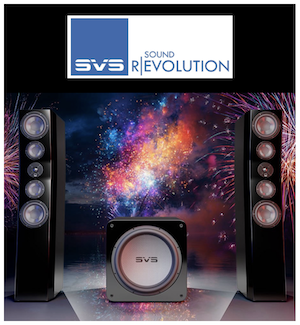saponico
New Member
Thread Starter
- Joined
- May 23, 2024
- Posts
- 3
More
- Preamp, Processor or Receiver
- Denon AVR-X4700H
- Main Amp
- Sanders Stereo Magtech
- Front Speakers
- Magnepan 3.7
- Subwoofers
- JL Audio Fathom f113v2
Hello REW Support!
I am struggling with the connection configuration with my equipment. I have watched many videos and read many pages on the Internet, but I am still not sure I am connecting everything up correctly when a receiver is in the mix.
I attached 3 pictures:
Thank you so much!
I am struggling with the connection configuration with my equipment. I have watched many videos and read many pages on the Internet, but I am still not sure I am connecting everything up correctly when a receiver is in the mix.
I attached 3 pictures:
- My proposed connection of equipment to perform a measurement
- One example of a connection configuration that makes logical sense to me for creating the loopback connection to measure all equipment in the system.
- One example of a connection configuration that I observed online.
Thank you so much!








